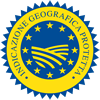Description
The Borrego do Baixo Alentejo PGI descends from the crossing of two breeds of sheep, the Campaniça and the White Merino with other non native breeds. Each year approximately 400.000 of these sheep are reared for their meat.
Production Area
Borrego do Baixo Alentejo PGI is made in the municipal areas of Aljustrel, Amodôvar, Alvito, Barrancos, Beja, Castro Verde, Cuba, Ferriera do Alentejo, Mértola, Moura, Ourique, Serpa, Viana do Alentejo, Vidigueira, Alácer do Sal, Grândola, Mourão, Odemira, Portel and Santiago do Cacém, in the Beja, Évora and Setubal districts.
Production Method
The diet on which this lamb is fed for its superlative meat is primarily its mother's milk to which straw and cereals are later added. This is particularly the case during the breeding season and it gives this meat its distinctive flavour. The lambs are slaughtered between three and four months old, when they weigh between 8 kg and 13 kg.
Appearance and Flavour
Borrego do Baixo Alentejo PGI is light pink in colour and extremely tender and succulent with a compact consistency and evenly distributed fat.
History
The origins of Borrego do Baixo Alentejo PGI date back to the times of the Roman occupation, in fact according to some writers, at that time the sheep in the south-eastern part of the Alentejo region were already well-established. The Campaniça breed descends from the Ovis aries ligeriensis breed which originated in the Loire area of France and from which the Spanish breeds, Aragonesa and Manchega also descend. The milk from these sheep, together with the milk from the Merino sheep is used above all in the production of the famous Queijo Serpa PDO cheese. However the rearing of these sheep, apart from for their wool and milk, has recently significantly increased because there is a growing demand for this high quality meat.
Gastronomy
Borrego do Baixo Alentejo PGI must be stored at a temperature of between 2°C-4°C. It cannot be frozen before it is sold but it may be frozen once acquired for domestic use. Once bought, the meat can only be kept in the fridge for a few days. The meat cannot be eaten sooner than 72 hours after slaughter. Lamb is particularly and traditionally eaten at Easter time. Borrego do Baixo Alentejo PGI lamb is used in many traditional local disse in the Alentejo area, among the best known being ensopado de borrego à pastora and perna de borrego assada no forno de lenha. The less noble parts of the animal such as the head, hooves and offal are used in the preparation of estufadas and guisados.
Marketing
This lamb is only sold as Borrego do Baixo Alentejo PGI in the B and C categories indicating the carcass weight of the animal, which is between 8 kg and 10 kg in the first case and between 10 kg and 13 kg in the second. It is sold whole or in half or in prepacked and clearly identified and labelled cuts and joints.
Distinctive Features
The milk from the sheep that give us this excellent Borrego do Baixo Alentejo PGI lamb is considered so good that it is also used for making the superb cheeses of the Serpa area, among the best of which are Requeijão and Queijo Serpa PDO.







